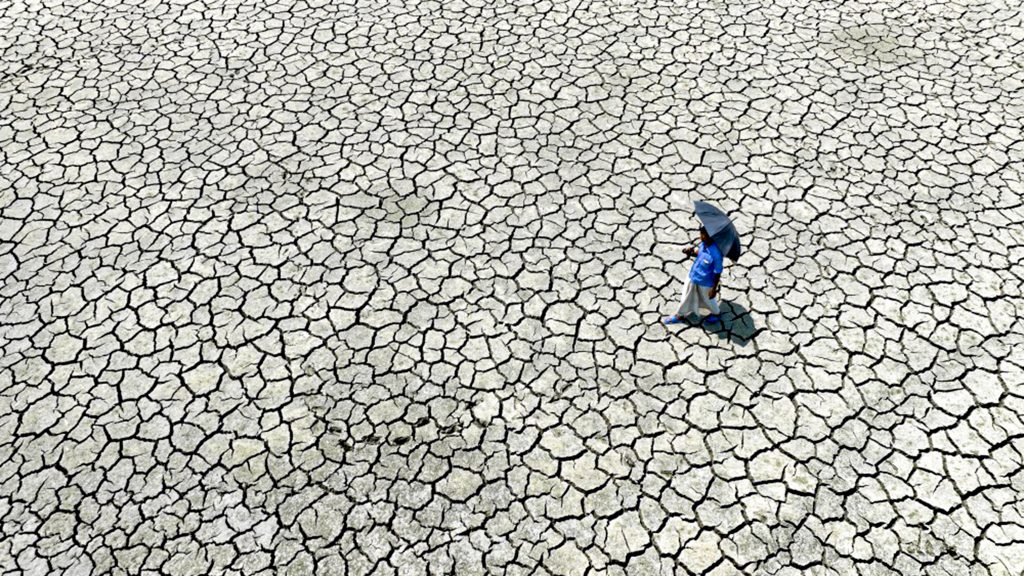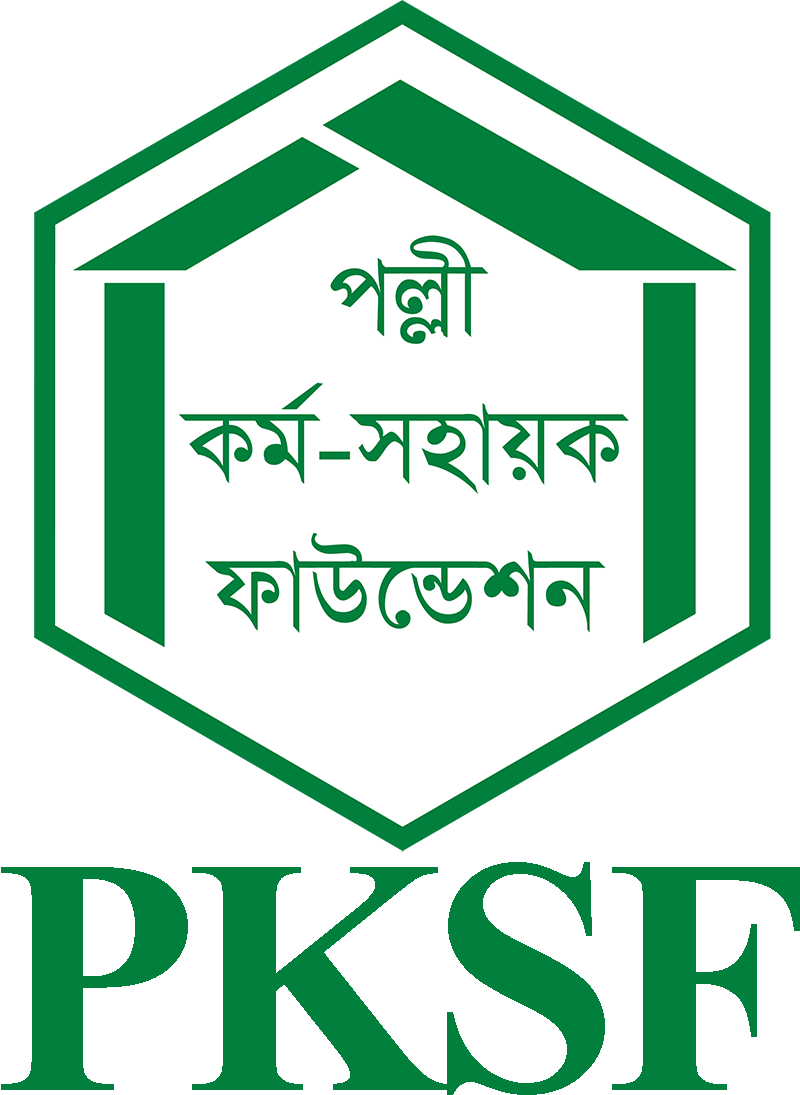
Introduction: Bangladesh faces an unpredictable drought hazard due to inadequate and uneven rainfall that affects the timing of onset and end of the monsoon season. The northwestern Barind region/districts of Bangladesh suffer the most from droughts (BBS, 2015). Climate change is changing the nature of droughts in Barind by increasing temperature and variations in precipitation. The historical data shows that the number of consecutive dry days and temperature have increased steadily over the past 30 years (MoEF, 2009). On the contrary, long-term projections of precipitation using different models show decreasing trend. Thus, drought episodes have become more erratic through climate change, a trend that has a high probability of worsening for the next decades.
Drought causes sever challenges for vulnerable communities of the Barind region. During droughts, almost all natural surface water sources evaporate, leaving none for drinking, sanitation or agriculture. The human cost is measured in a greater incidence of disease, especially among children and lack of nutrition due to crop failure, increased poverty and reduced development potential.
Objectives: The project intends to address the above-mentioned drought-related problems by promoting good water management, adaptive technological practices, infrastructure maintenance, and planning for irrigation, drinking and household usage. Also, the project intends to reduce water needs by promoting the cultivation of crops with low water requirements in the dry season, thus reducing irrigation needs up to 70% during the winter season. In addition, the project will provide more water access points for drinking purposes too, thereby reducing the burden on women.
Project components: The Project consists of the following three components under which the following activities (each, an “Activity”) will be implemented, each as further described in the Funding Proposal.
Component 1: Improved institutional and technical capacities to address climate change-induced drought
This first Component intends to build capacities among government institutions and NGOs to address climate change impacts, particularly related to droughts. This will be achieved by improving capacities among different interrelated scales of institutional and community organisations: at the ministry, subnational, and at community levels.
Output 1.1 Enhanced capacities of government institutions to implement and monitor water resources management and climate change adaptation projects
Activity 1.1.1 Establishment of climate change unit at the Barind Multipurpose Development Authority (BMDA)
Activity 1.1.2 Establishment of a Managed Aquifer Recharge (MAR) center
Output 1.2 Knowledge and technical capacities of climate change adaptation interventions improved
- Real Time Evaluation (RTE) study
- Analyse results and develop database of intervention impacts
- Training to NGOs on climate change
- Trainings on climate change issues and project management
- Organize knowledge sharing workshops and seminars
Output 1.3 Communities are organized and aware of climate change issues and potential responses
- Beneficiary selection, group formation and mobilization
- Develop beneficiary’s socio-economic profiles
- Arrange monthly group meetings on climate change issues of Climate Change Adaptation Groups (CCAG)
- Trainings of beneficiary groups
- Organize exchange visits for CCAG members and implementing entities’ staffs
Component 2: Increased availability of surface and ground water for irrigation and drinking.
In the proposed districts, the average annual rainfall (1,400 mm) is far below that of the national average (i.e., 2,300 mm). Rains do not percolate into aquifers easily because of the presence of clay soils, which have low porosity. Therefore, a large amount of rain-water evaporates before percolating into the soil. In addition, there are no large and deep surface water sources, such as lakes or rivers, and hence groundwater recharge is very slow. During times of drought, when surface water dries up, communities traditionally use hand-pumped tube-wells for drinking purposes. These extract water from shallow aquifers that depend on seasonal rainfall and the availability of surface water. However, under current drought regimes, shallow aquifers are dry and hand-pumped tube-wells are of no use.
Under this Component, water access will be provided for CCAGs through different mechanisms. Canals and ponds will be used as per site specifications and substrate adequacy. The Project will also demonstrate the effectiveness of managed aquifer recharge systems by harvesting rainwater and injecting it into the aquifer. Piezometres will be used to check changes in the water table level. Communities will have increased access to water for household drinking and irrigation. In order to improve access to water, multiple interventions will be implemented, including the use of 140 km of renovated canals, 300 renovated ponds for surface water storage, 40 ponds with recharge well and 2,500 rooftop MAR systems. It is estimated that by the end of the Project, about 215,000 people will have improved access to water use.
Output 2.1 Improved storage of surface water
- Ponds re-excavation
- Canals re-excavation
Output 2.2 Improved recharge of aquifers
- Installation of rooftop managed aquifer recharge systems
- Installation of recharge well for ground water recharge in ponds
Component 3: Drought resilient livelihoods created through a sustainable agricultural production.
This Component will promote drought-adaptive cropping patterns. A cropping pattern will include at least three crops in a year on a single piece of land. It will include different types of crops. The crops will be chosen based on moisture-stress tolerant capacity, duration of the production cycle, and water requirement. Considered crops include rice, wheat, and mung bean. For example, a suggested cropping pattern is BRRI Dhan-56 (rice variety)-BARI Gom-24 (a wheat variety)-BARI Mung-6 (a pulse variety). Fruit trees will also be promoted since they require a minimal amount of water. Besides, cotton will also be promoted since it is a crop with high agronomic and economic potentials in the Barind region and is drought-tolerant. The Project will link CCAG members to the local office of the Department of Agricultural Extension (DAE) and/or Bangladesh Agricultural Development Corporation (BADC) to get seeds.
Through this Component, it is expected that farmers will increase productivity and incomes from agriculture. It is also expected that water requirement for agricultural production will be reduced by 70%.
Output 3.1 Drought-resilient crops are adopted by farmers
- Promotion of drought-adaptive cropping patterns, crop varieties
- Promotion of drought adaptive fruit cultivation
Expected outcomes: The project will bring 3,500 hectares of land under irrigation by rehabilitating 140 kms of canal in the three selected districts. In order to promote a sustainable use of groundwater resources, the project will implement a Managed Aquifer Recharge technique (rainwater directed through tubes to the aquifer) to replenish the ground water. It is expected that 2,500 rooftop-based MAR will replenish about 560,000 m3 of water into the aquifer annually which will increase access to drinking water of the selected communities in proposed districts. 40 inject wells in ponds will replenish 400,000 m3 of water into the aquifer annually. In addition, these ponds will also preserve about 150,000 m3 of water as surface storage. Also, 15,000 farmers will apply drought-adaptive cropping patterns.
Project Area: 14 most drought vulnerable and poverty stricken upazilas of Naogaon (all 9 upazilas, Rajshahi (two upazilas) and Chapainawabganj (three upazilas) districts.
Target Beneficiaries: Number of direct beneficiaries is 215,000 and Indirect beneficiaries are all the people of the selected upazilas.
Project Duration: 48 months (4 years)
